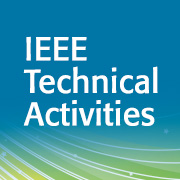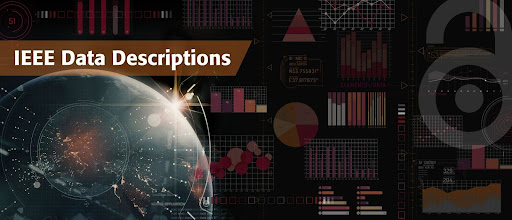 According to a study by the International Fund for Agricultural Development, and the United Nations Environment Programme, approximately 2.5 billion people live directly from agricultural production systems, either as full-or part-time farmers, or as members of farming households that support farming activities. These farms, run by “smallholders,” as they are called, face complications as there is no universally accepted definition of a “small farm.” According to the report, “Overall, smallholder farmers are characterized by marginalization, in terms of accessibility, resources, information, technology, capital and assets, but there is great variation in the degree to which each of these applies.” These variances are problematic across the globe; however, are particularly evident in Africa, where small-scale farms produce more than 70 percent of food supply, by recent estimates. Since so little is known and reported about these farms, including location, utilization of labor, operational challenges, and overall productivity, the lack of transparency regarding efficiency of each farm leads to leariness from investors and resellers.
According to a study by the International Fund for Agricultural Development, and the United Nations Environment Programme, approximately 2.5 billion people live directly from agricultural production systems, either as full-or part-time farmers, or as members of farming households that support farming activities. These farms, run by “smallholders,” as they are called, face complications as there is no universally accepted definition of a “small farm.” According to the report, “Overall, smallholder farmers are characterized by marginalization, in terms of accessibility, resources, information, technology, capital and assets, but there is great variation in the degree to which each of these applies.” These variances are problematic across the globe; however, are particularly evident in Africa, where small-scale farms produce more than 70 percent of food supply, by recent estimates. Since so little is known and reported about these farms, including location, utilization of labor, operational challenges, and overall productivity, the lack of transparency regarding efficiency of each farm leads to leariness from investors and resellers.
Can new technologies help to address these knowledge gaps, and assist farmers in establishing trust between those who buy their produce and those who may serve as potential investors? In the May/June 2016 issue of IEEE Internet Computing, the article, “Toward Quantified Small-Scale Farms in Africa,” the authors discuss why quantified small-scale farms are urgently needed, detail the key metrics that must be quantified, and explain how these metrics have been implemented to date using frugal IoT to assess the data collected and drive the development key indicator scores. Focusing on these metrics allows for more information about the relative performance of a sample of small-scale irrigated farms, which will better inform investors, buyers, and the farmers, themselves.
What are some other potential uses of frugal IoT to benefit humanity? Join the discussion on IEEE CollabratecTM.
IEEE Collabratec sign up is free using your IEEE Account.
To further illustrate the discrepancies that lead to unpredictable output, many of the farms are located in areas where rainfall is inadequate for the types of crops they grow, and where weather conditions are unfavorable. However, some farms located in drier areas fare better than those in more favorable areas. In these cases, according to the article, the disparity was attributed to better coping strategies, promoted by more effective administrative structures. The challenge in predicting which farms will thrive, and which will falter, is a “perpetual roll of the dice” without analysis of collected metrics and a system in place to monitor them. Weather changes, breakdowns of irrigation equipment, and lack of information on when to plant are all contributors that affect day-to-day operational performance and lead to demotivation of farmers. This, in turn, challenges relationships with investors and aggregators alike, who disclosed that they had no way to continuously monitor farms to ensure consistent quantity, quality, and productivity.
How can the productivity of small-scale farms be measured, in a way that will best inform investors, buyers, and farmers about the relative performance of each? The authors have determined five key indicators that are of importance for irrigated farms: water point reliability; water sensitivity rating; crop health score; market readiness score; and, farmer reliability score. Together, these metrics touch upon nearly all factors determining consistent farm success, and and somewhat standardize a farming population that has historically been anything but quantifiable.
Implementing IoT devices has proved continually successful in improving countless facets of everyday life. This holds true, as well, in informing understanding of farm operations and gathering data to support the five key indicators of importance for small-scale farms. With frugal IoT, the article states, hardware deployments are able to be minimized, and data collected can be assessed from several perspectives to drive the development of the aforementioned scores. To facilitate this, the group collects sensor data and links to weather and other environmental information.
Using monitoring hardware such as solar-powered ultrasonic tank-level sensors, and soil moisture sensors, which are Global System for Mobile Communications and General Packet Radio Service (GSM/GPRS)-enabled and use the Message Queueing Telemetry Transport (MQTT) protocol via IBM’s Watson IoT to send sensor data and receive commands from the cloud, operations using more reliable irrigation can be monitored. This information, combined with The Weather Company APIs and data from local weather stations, can determine variables critical for calculating a crop’s irrigation requirements. Continuous monitoring of groundwater levels using pressure recorders provides early warnings on looming water shortages. This has helped to put more efficient, reliable, and, frankly, necessary infrastructures in place. The group has also started to offer day-ahead irrigation recommendations via SMS, and now monitors how closely the advice is followed.
The group hopes to, in the future, use this data to link investors and buyers to small-scale farms that will be quantified in part to the frugal IoT infrastructures that they’ve implemented. Continuing to develop monitoring systems, analyze and re-evaluate key performance indicators, and identify challenges that have not yet been addressed will increase the prospects for farming success in Africa and beyond, ultimately improving food security, alleviating trust issues, and adding to quality of product and life.





